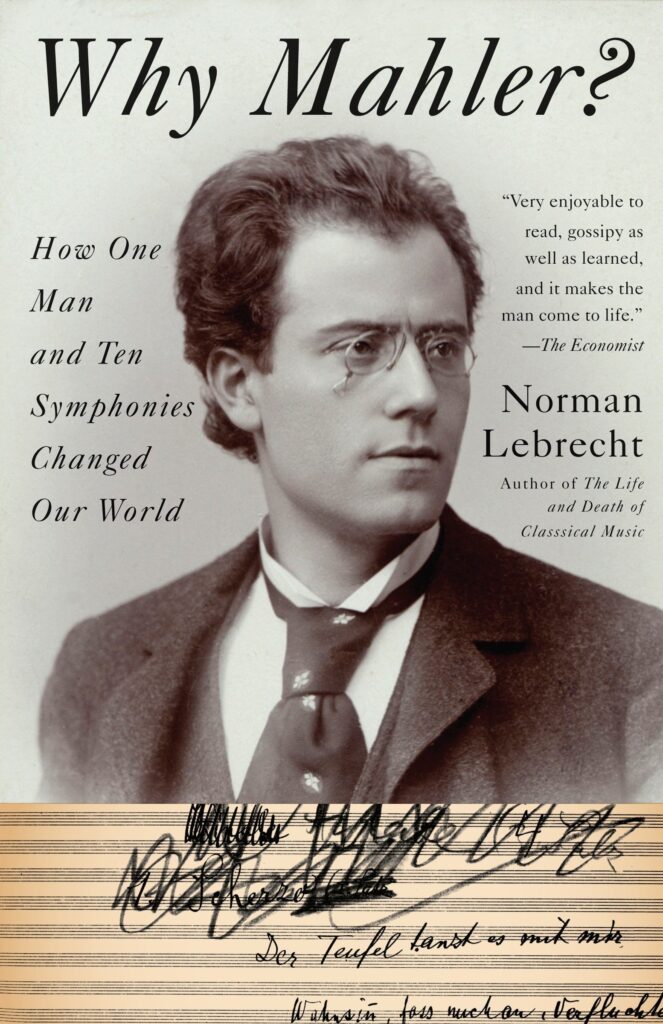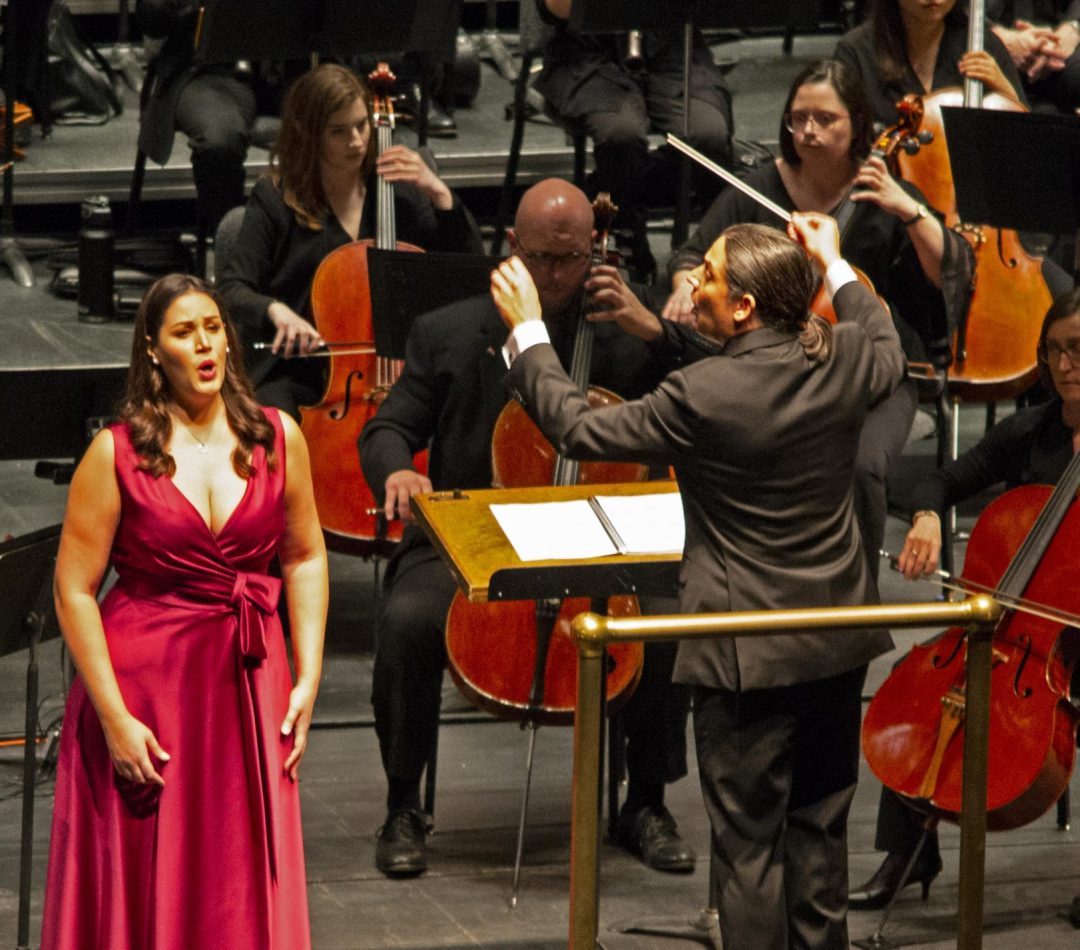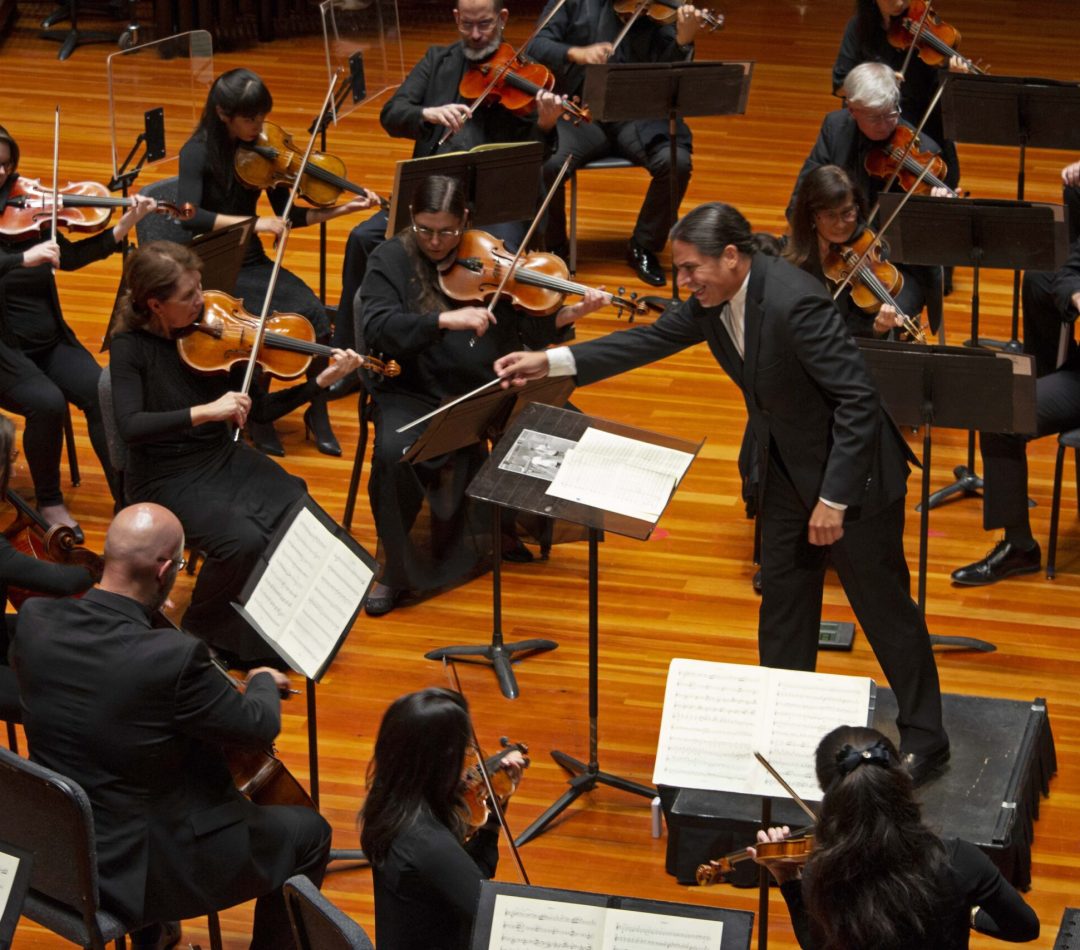British author Norman Lebrecht brings us up close to a personal exploration of the life and work of the iconic Austrian composer Gustav Mahler. I, personally, am fascinated with all the implications that surround his career as a conductor and composer. This book gives us a different angle, touching on exciting topics both well known from Mahler’s life, and some obscure ones that everybody will find intriguing.
I designed a personal “soundtrack” for the reader to use throughout the book, a musical accompaniment for the reading. Our book club is also a listening club. Mr. Lebrecht also gives us several recording and interpreter choices in the chapter “A question of interpretation” that I encourage our book club participants to explore.
I wish all our TSO audience members to enjoy this exciting book, and I am very much looking forward to hearing all kinds of questions that I will be thrilled to answer soon.
Happy reading and listening!
Your music director,


José Luis Gomez
The book is Why Mahler?: How One Man and Ten Symphonies Changed Our World by Norman Lebrecht.
Buy the Book Borrow from the Pima County Public Library
Book Chapters and Listening Guide
Chapter 2: Living in a Nowhere Land
Mahler: Piano Quartet in A Minor for piano and string trio
Chapter 3: City of Dreams
Mahler: Songs of a Wayfarer
Gustav Mahler Jugendorchester/Herbert Blomstedt
Chapter 4: A Symphony Like the World
Mahler: Symphony No. 1 (complete with the original Blumine movement)
Royal Scottish National Orchestra/Neeme Järvi
Chapter 5: Rise Again
Mahler: Symphony No. 2 (ending)
Lucerne Festival Orchestra/Claudio Abbado
Chapter 6: What Love Tells Me
The Green Giant & What Flowers Tell Me
Mahler: What the Wild Flowers tell me from Symphony No. 3 (reduced orchestration by Benjamin Britten)
Frankfurt Radio Symphony/Paavo Järvi
Chapter 7: A Taste of Power
A Different Set of Jingle Bells
Mahler: Symphony No. 4
Vienna Philharmonic/Leonard Bernstein
Chapter 8: The Most Beautiful Girl in Vienna
Alma Schindler: “Laue Sommernacht”
Chapters 9–10: Small Interludes of Happiness and Three Hammerblows
Mahler: Symphony No. 5, Adagietto
Vienna Philharmonic/Leonard Bernstein
Mahler: Symphony No. 6, movement 1
Chicago Symphony Orchestra/Claudio Abbado
The actual “Three Hammerblows”
Mahler: Symphony No. 6, movement 4
Sydney Symphony Orchestra/Vladimir Ashkenazy
Mahler: Symphony No. 7, movement 5
Frankfurt Radio Symphony/Paavo Järvi
Mahler: Symphony No. 8, finale
National Youth Orchestra of Great Britain/Simon Rattle
I will attach here the text of this section in German with its English translation. It makes it very relevant to know what is being said at this very exciting finale of this massive symphony. It is one of the most optimistic and positive-looking finales of all his symphonies, something that aligns with the chapter title.
German
Mater Gloriosa
Komm! Hebe dich zu höhern Sphären!
Wenn er dich ahnet, folgt er nach.
Doktor Marianus (auf dem Angesicht anbetend)
Blicket auf zum Retterblick,
Alle reuig Zarten,
Euch zu seligem Geschick
Dankend umzuarten.
Werde jeder bessre Sinn
Dir zum Dienst erbötig;
Jungfrau, Mutter, Königin,
Göttin, bleibe gnädig!
Chorus mysticus
Alles Vergängliche
Ist nur ein Gleichnis;
Das Unzulängliche,
Hier wird’s Ereignis;
Das Unbeschreibliche,
Hier ist’s getan;
Das Ewig-Weibliche
Zieht uns hinan.
English
Mater Gloriosa
Come, rise up to higher spheres!
If he is aware of you, he will follow.
Doktor Marianus (prostrate in prayer)
Look up to the redeeming sight,
All you who repent,
That tries to bring you
To a blessed fate.
That every better sense
May serve you;
Virgin, Mother, Queen,
Goddess, be gracious to us!
Chorus Mysticus
All that passes away
Is only a likeness;
The inadequacy of earth
Here finds fulfilment;
The ineffable
Here is accomplished;
The eternal feminine
leads us up.
Chapter 11: Discovering America
Not a Ninth Symphony
An introduction to this piece, beautifully done by Leonard Bernstein—a very interesting explanation from famous American conductor Leonard Bernstein, one of the first conductors to champion Mahler’s music.
Mahler: Das Lied von der Erde
Israel Philharmonic/Leonard Bernstein
Chapter 12: “To Live for You, To Die for You”
Mahler: Symphony No. 9
Vienna Philharmonic/Leonard Bernstein
Another personal introduction by Leonard Bernstein that I find incredibly interesting—only the first part of Bernstein on the Mahler 9th’s “four ways to say goodbye.”
I find this video one of the most intense and touching moments of the symphony that depicts so well the strong connection of the music of Mahler with his own fading life.
Mahler: Symphony No. 9, last 5 minutes
Lucerne Festival Orchestra/Claudio Abbado
Chapter 13: After Mahler
Mahler: Symphony No. 10, Adagio
Vienna Philharmonic/Claudio Abbado
Mahler: Symphony No. 10, movement 5 (Cooke edition)
BBC Philharmonic/Gianandrea Noseda




